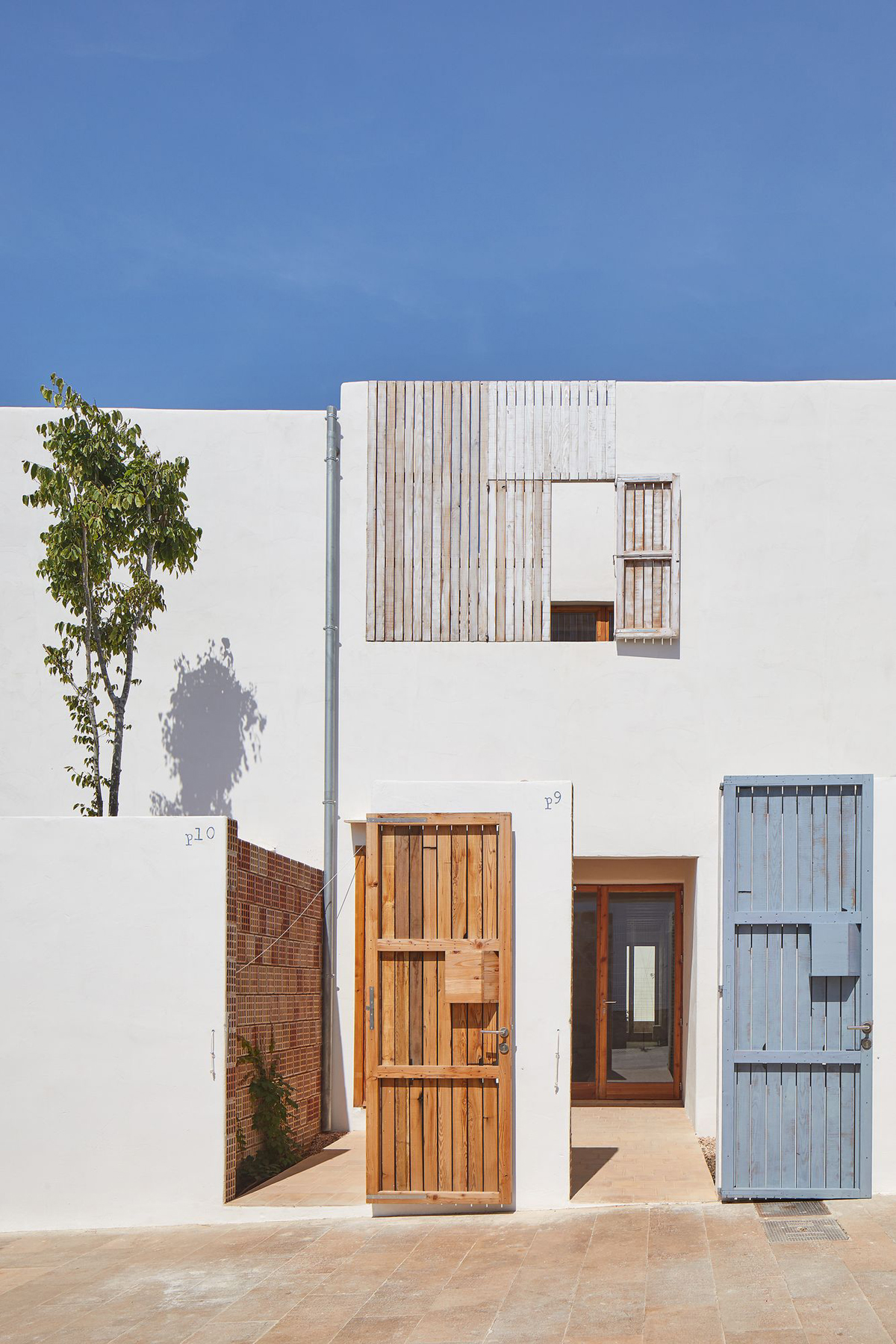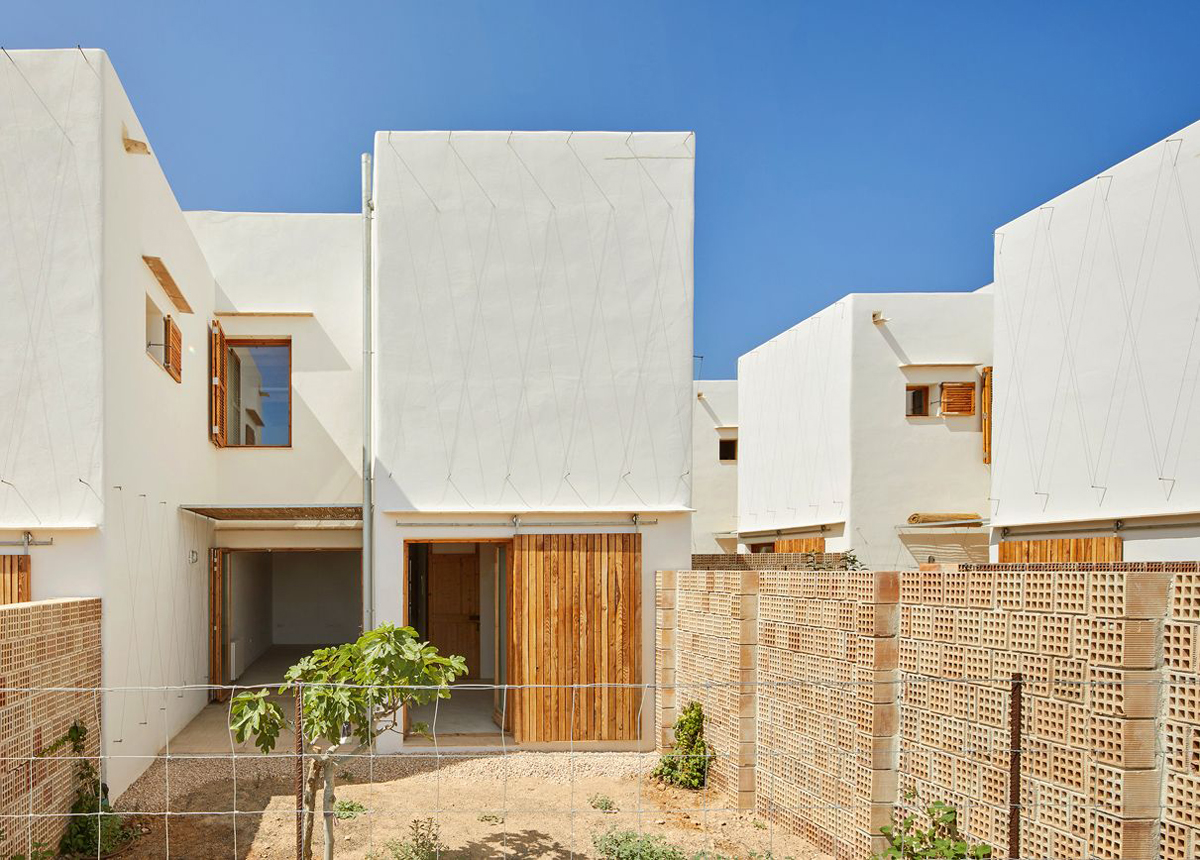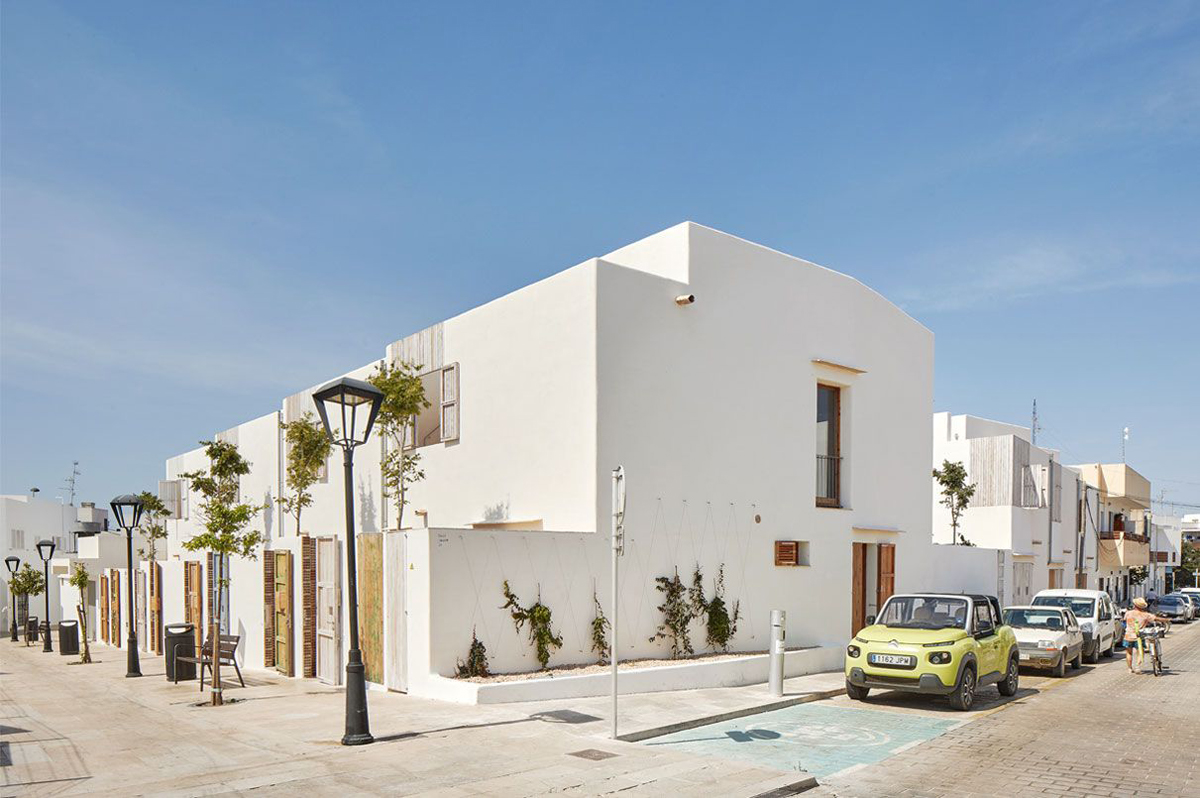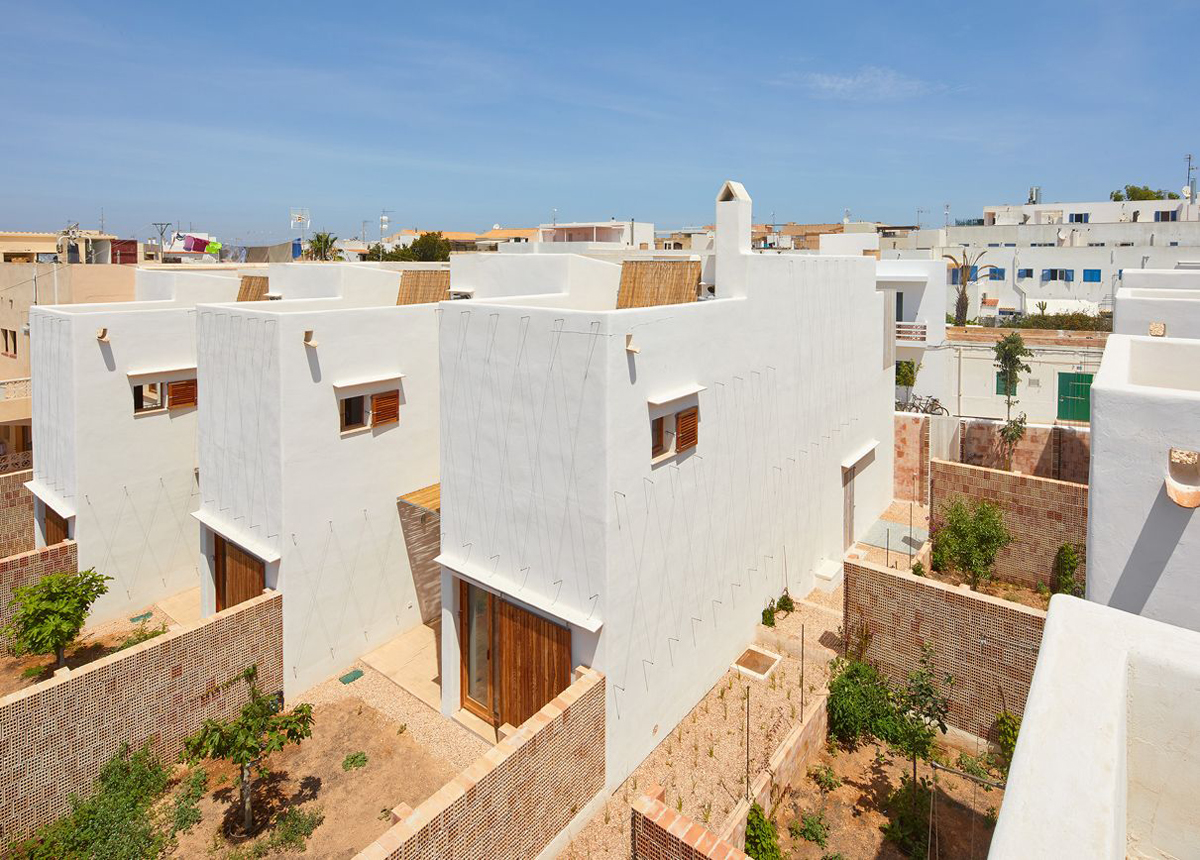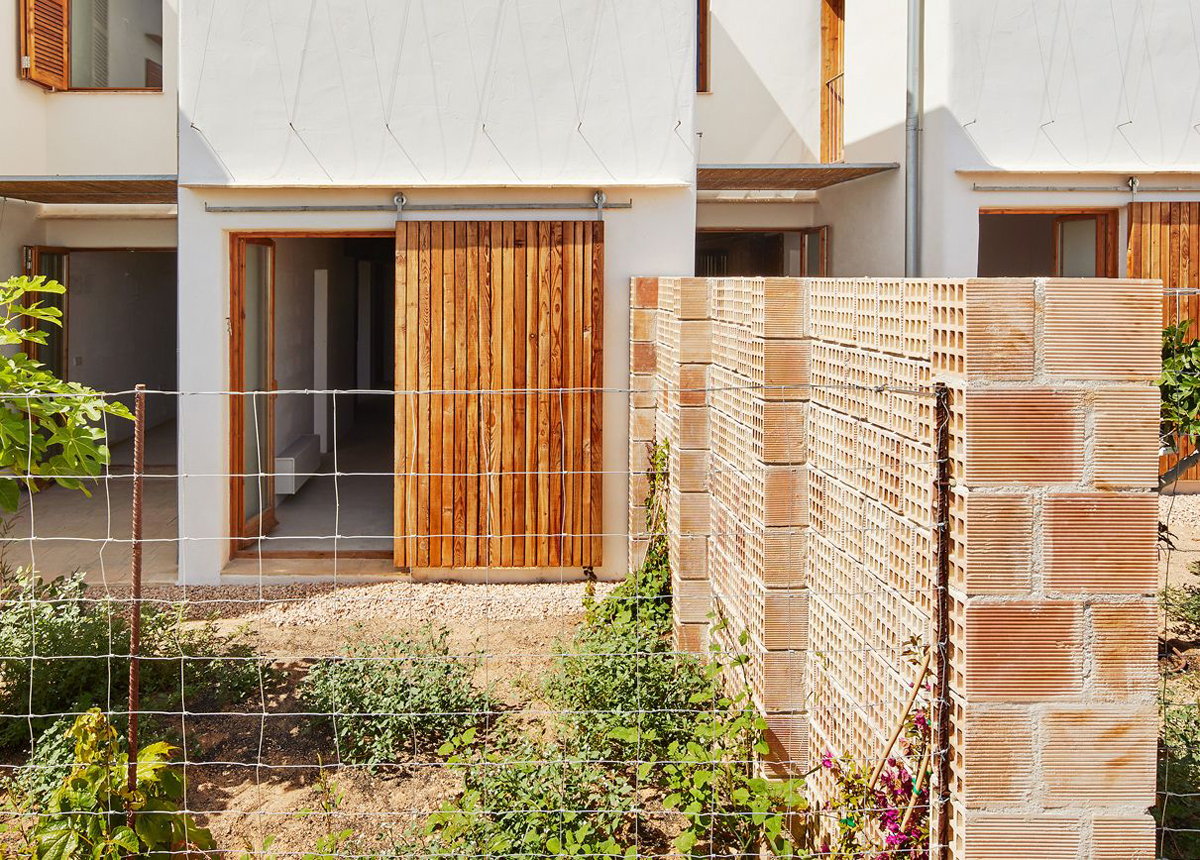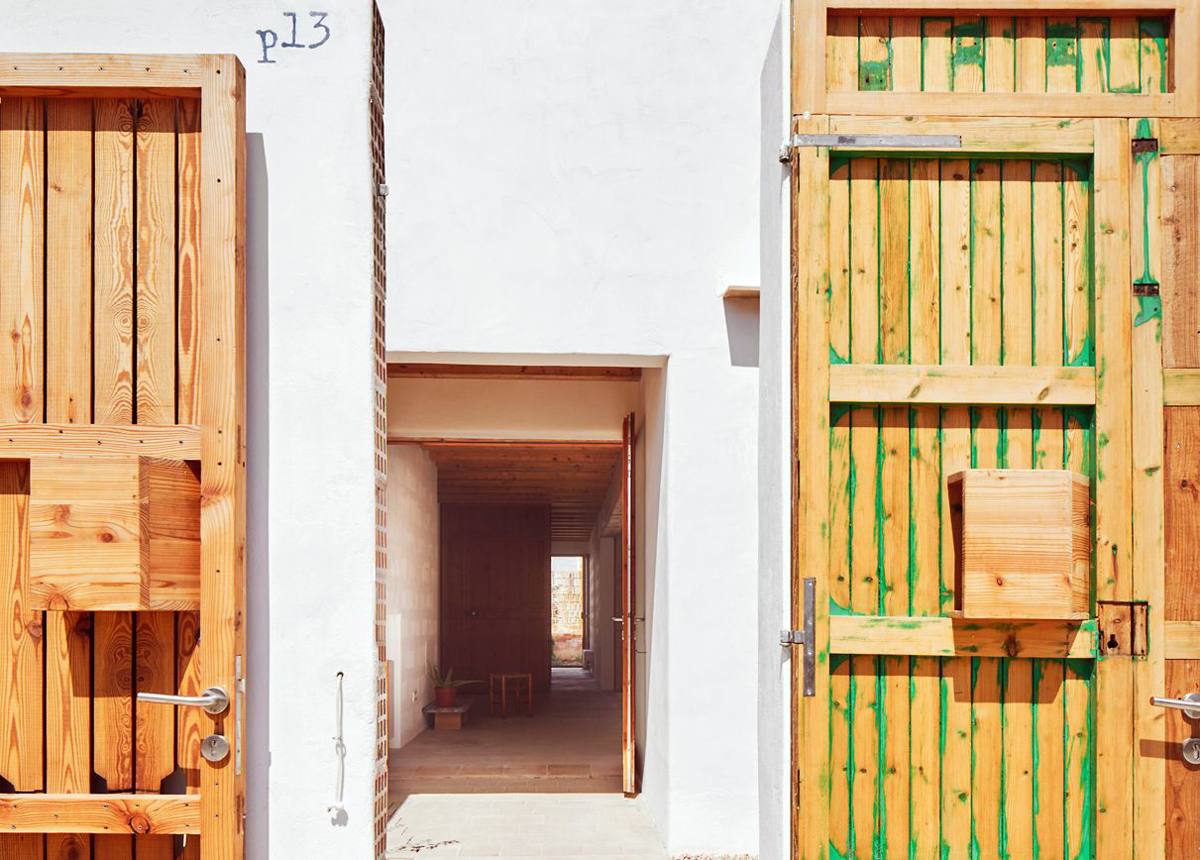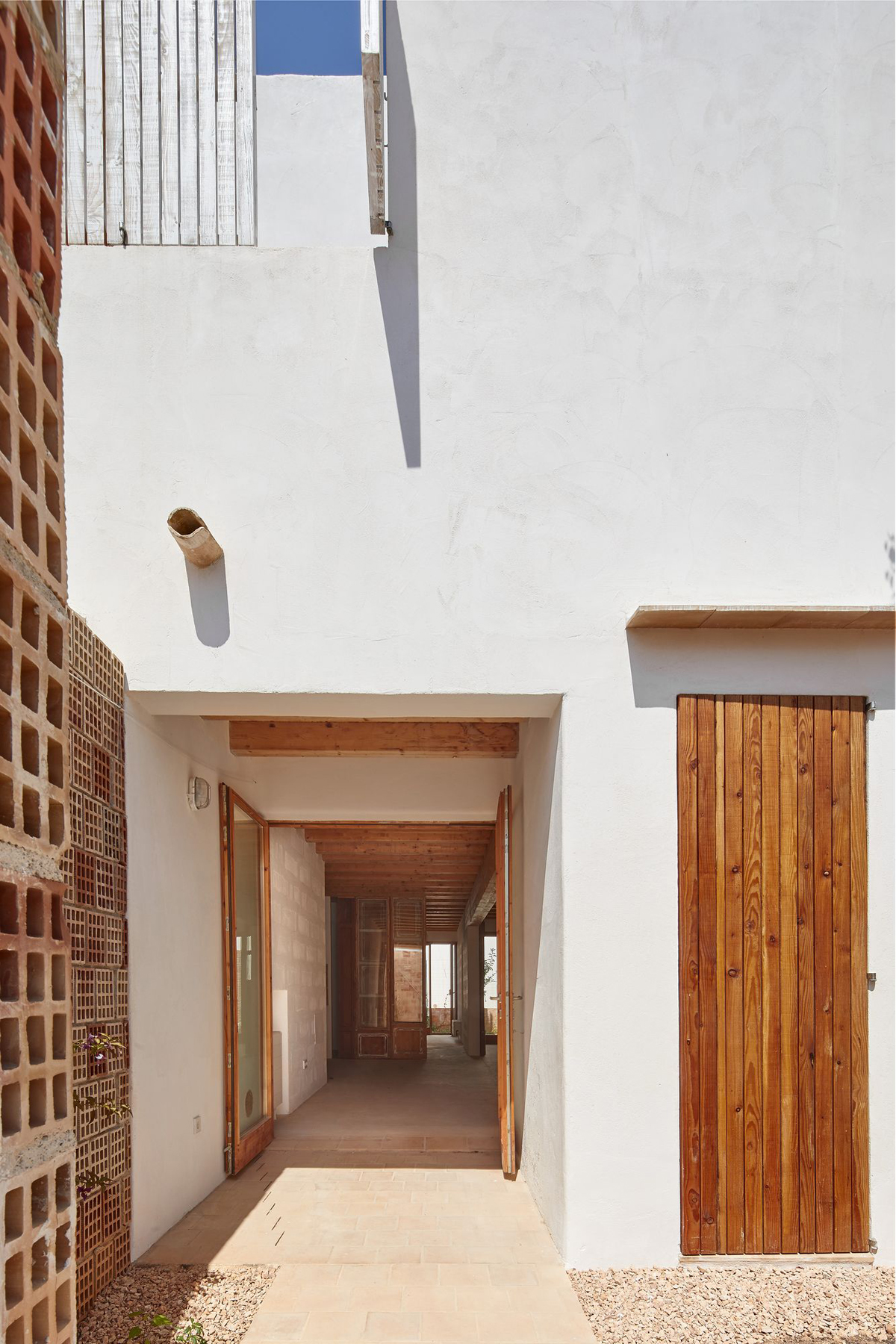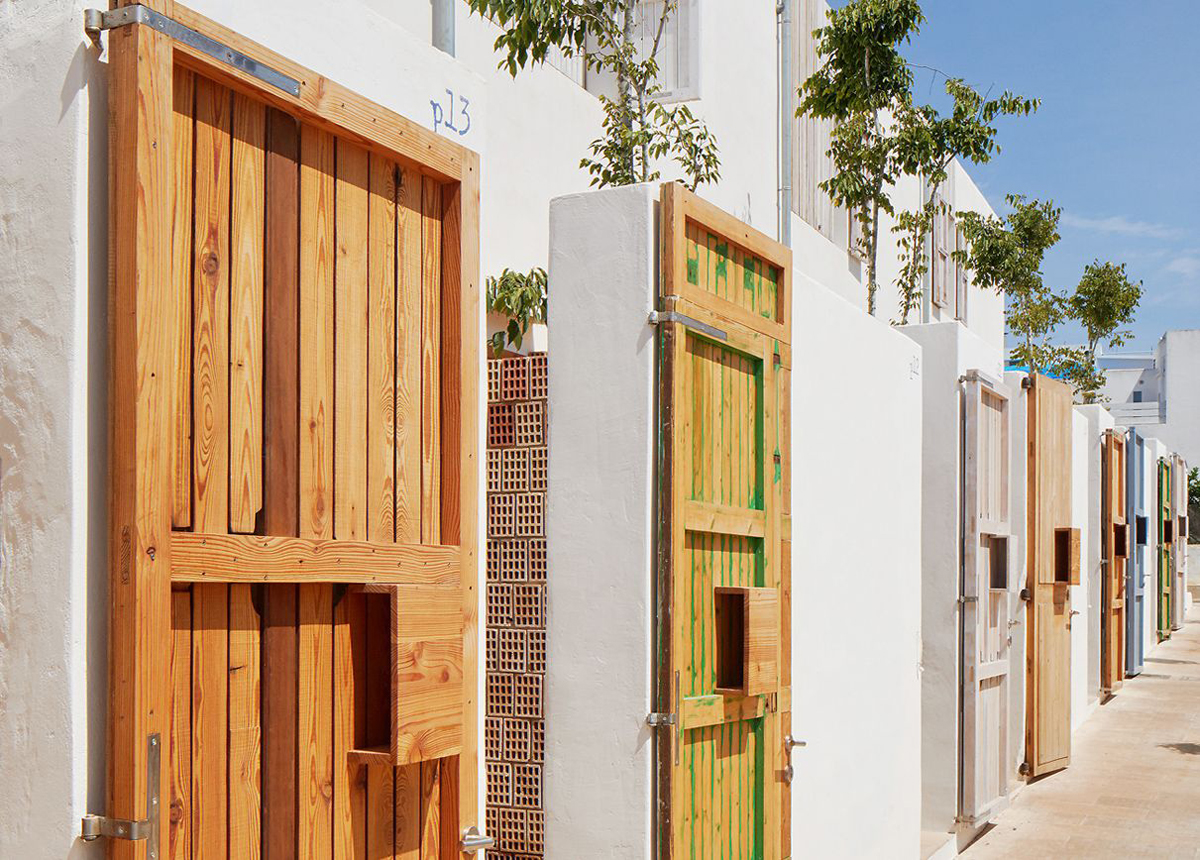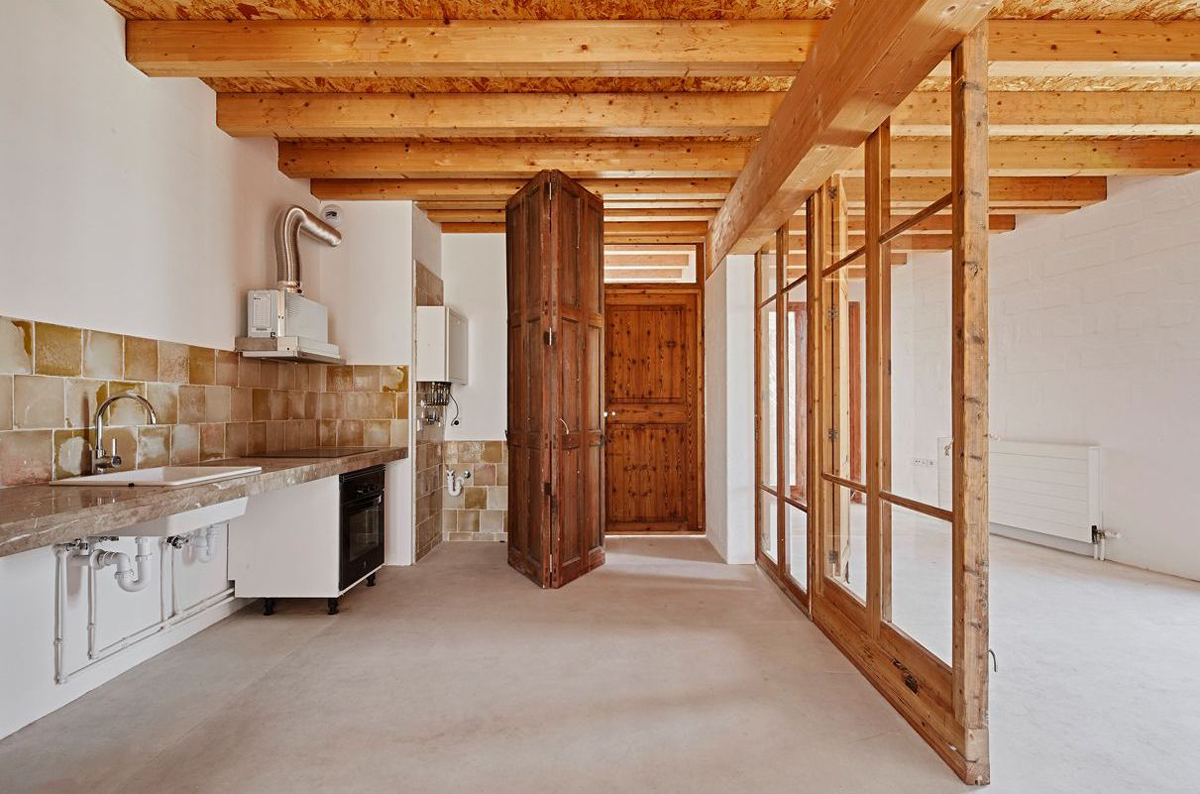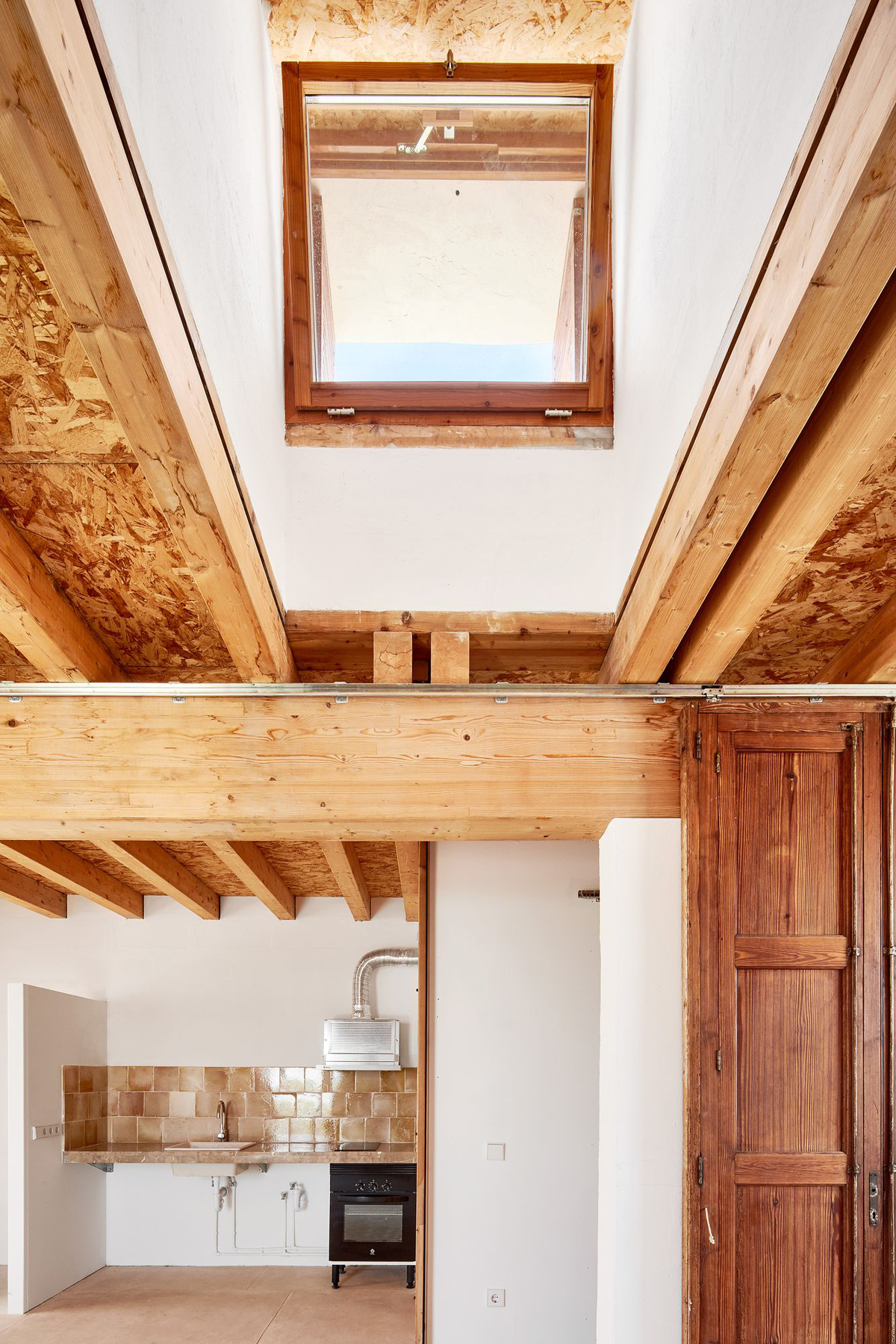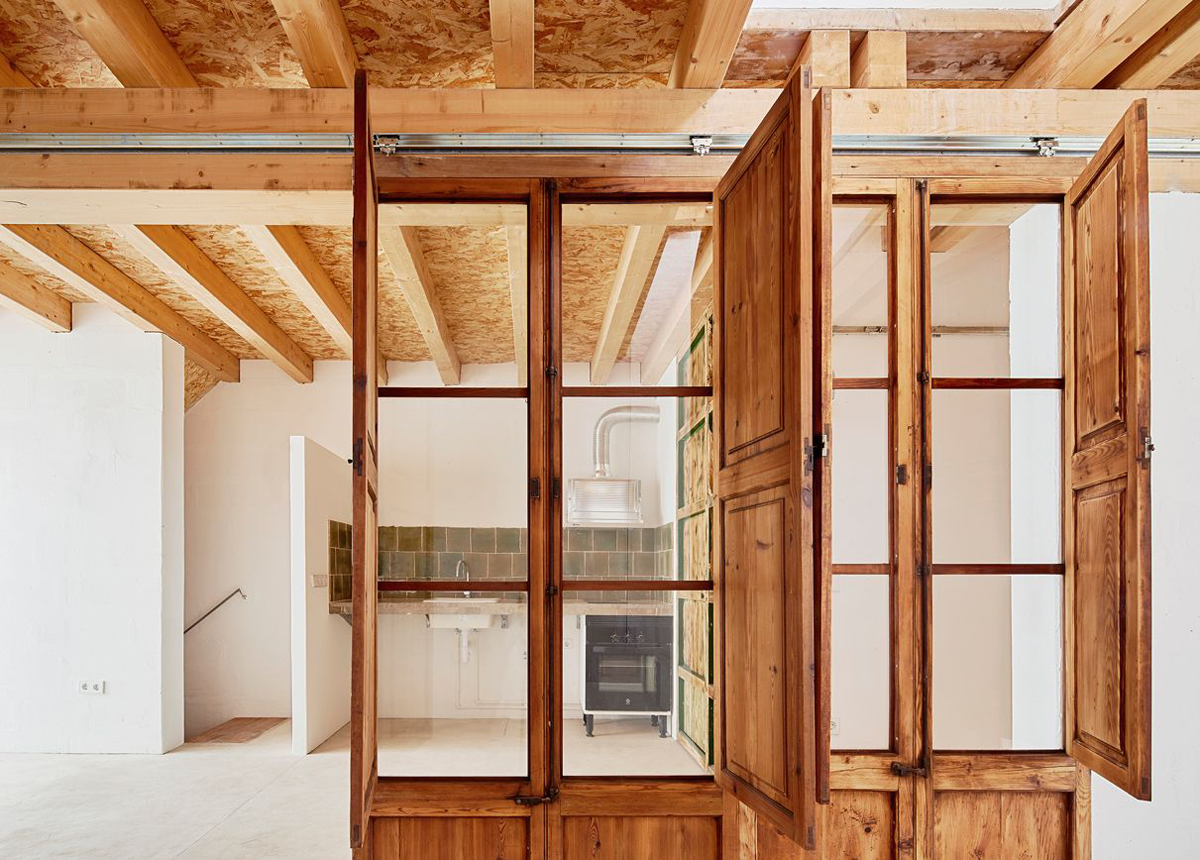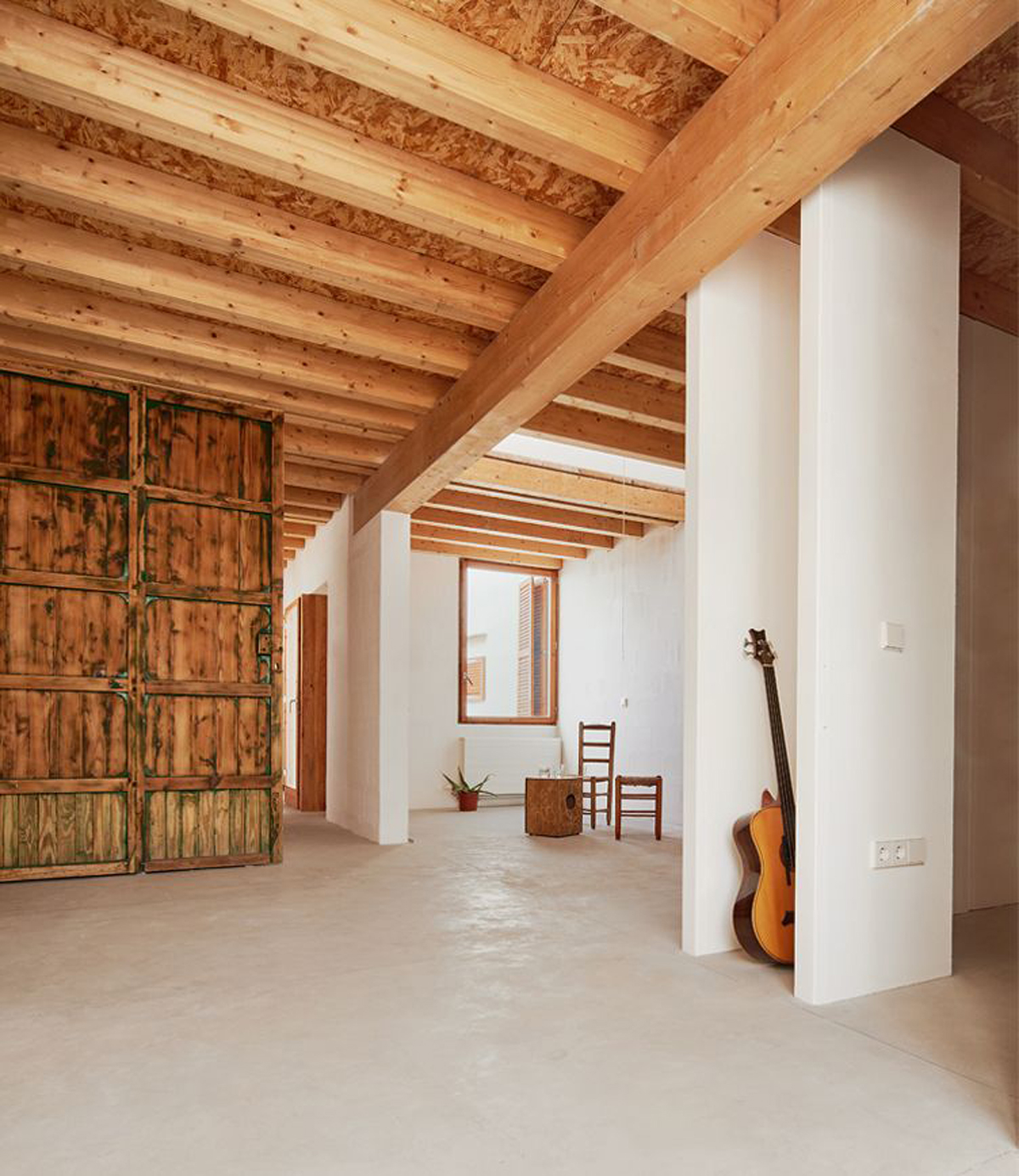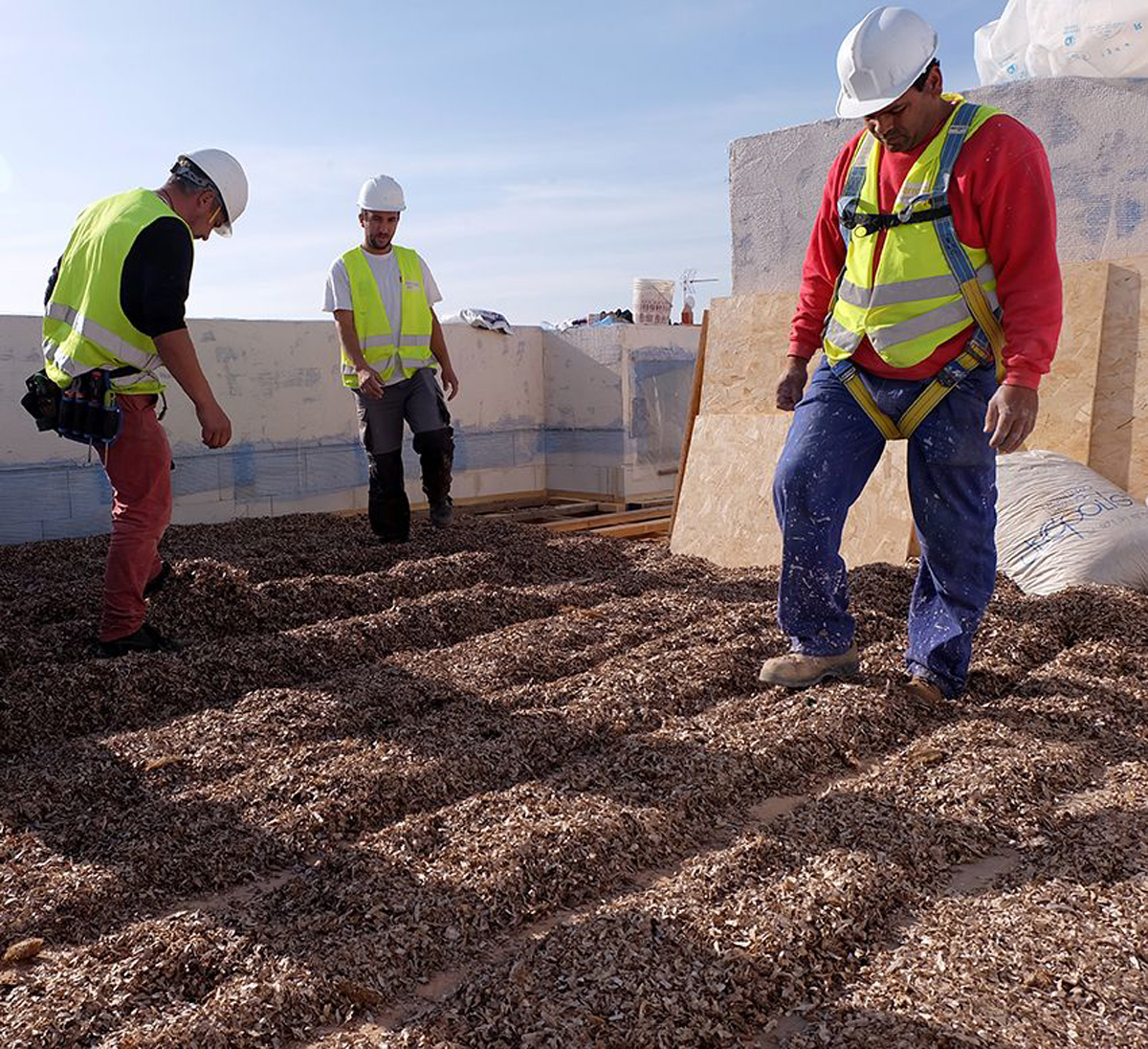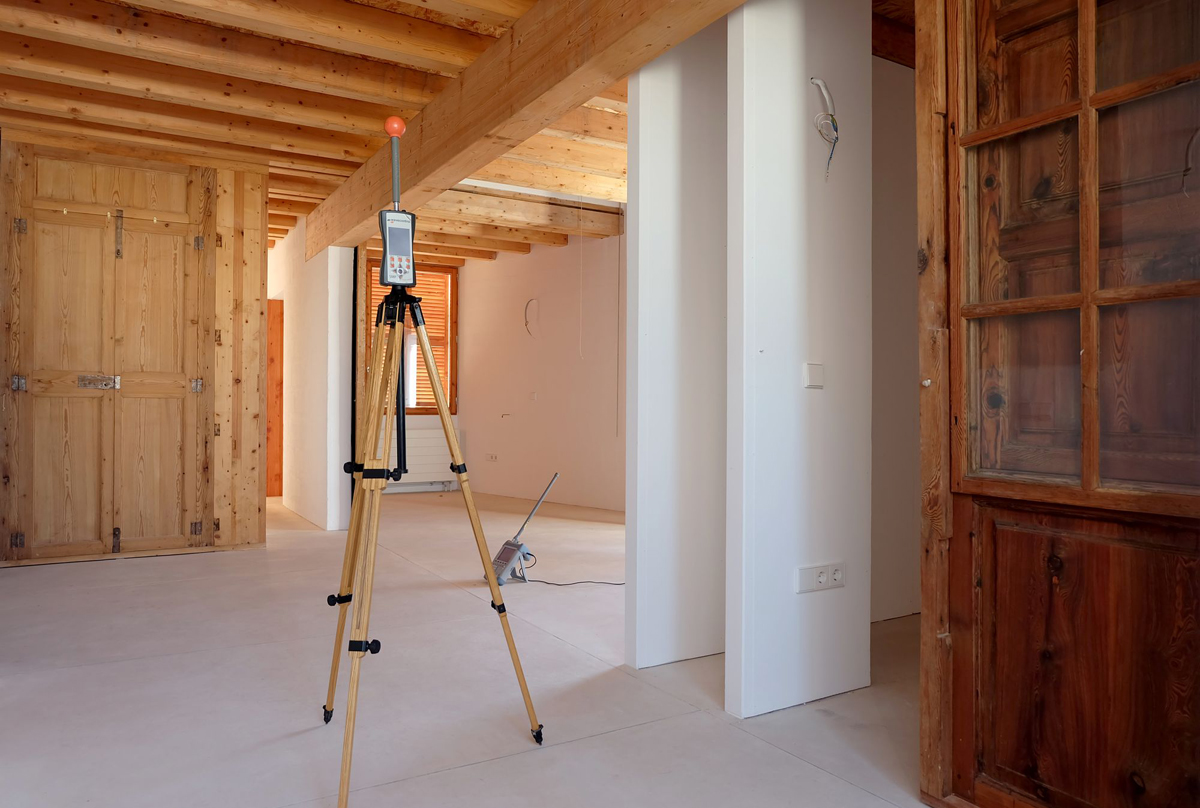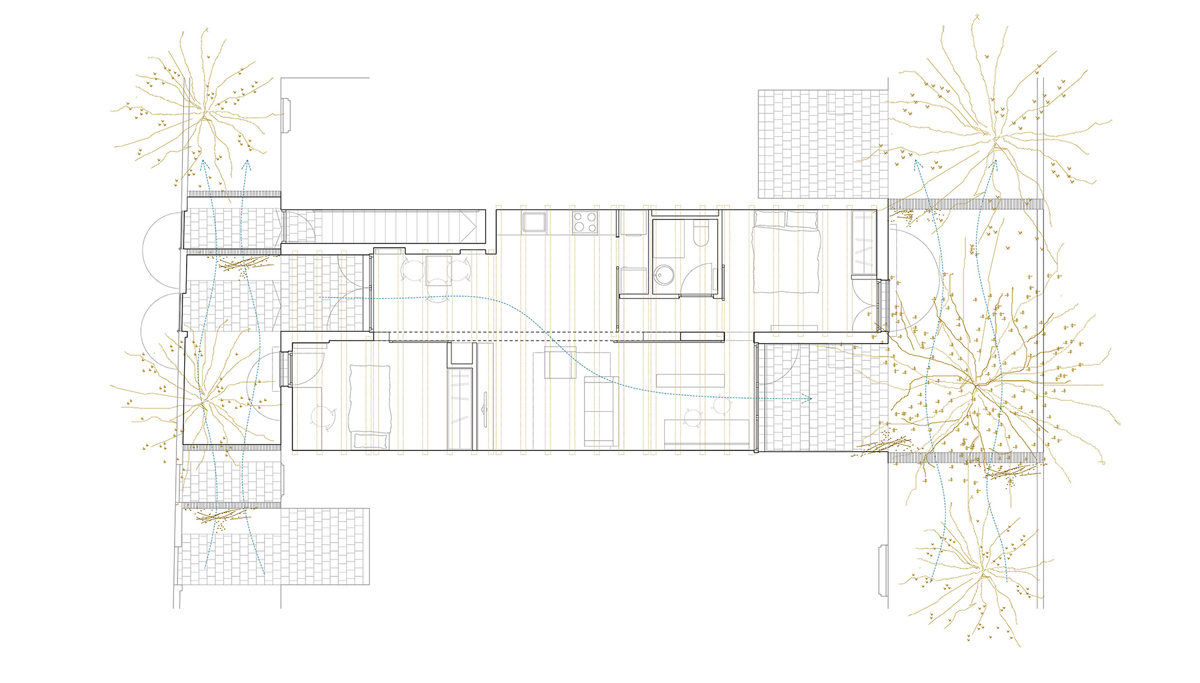Carles Oliver Formentera Social Housing
The proposal includes the construction of a prototype building and its monitoring with the collaboration of University of the Balearic Islands to verify the correct functioning of the solutions adopted, with the aim of providing contrasted data to the European Commission for the drafting of future environmental regulations for building from 2020.
The Prototype consists of 14 public housing units in Formentera Island and aims to demonstrate the feasibility of developing a multifamily residential building reducing the associated ecological footprint by the following percentages:
50% Energy consumption during CONSTRUCTION.
75% Energy consumption during USEFUL LIFE.
60% Consumption of WATER.
50% Production of WASTE.
The main innovative aspect is the 50% reduction of CO2 emissions during the execution of works.
In order to do it, a proper selection of materials is proposed, preferably low embodied energy materials, recovering, insofar as possible, vernacular architecture techniques:
1. Waste and local raw materials requiring negligible industrial processes.
2. Local renewable green or raw materials.
3. Non local renewable green or raw materials with ecological label.4. Recycled materials or materials from other areas requiring low-consumption industrial processes.
For instance, it has been used dry Posidonia Oceanica for thermal insulation λ=0,044W/mK, natural hidraulic lime NHL-5 for structures because the lime needs no petrol for its production, and reused windows and bed strips from waste. So we propose a change of paradigm:
“Instead of investing in a chemical plant located 1.500km away, we invest the same budget to local unskilled labor, which should extend the Neptun grass to dry under the sun and compact it in pallets, achieving 15cm of insulation in roof. Moreover, it turns out that sea salt acts as natural biocide product and is completely environmentally friendly.”
This model of local architecture, where the project becomes a map of resources of the area, shows that far away from large cities, the most sustainable systems are at hand and we are letting them disappear: the local artisan industry of organic production with raw materials of Km 0.
This approach links environmental issues with the cultural tradition of each region, not only achieving an improvement in air quality and the prevention of global warming but also a recovery of the cities landscape quality.
However, in large European capitals, the large volume of work and the practical disappearance of local handicrafts necessitate the requirement of ecological production labels in 100% of the consignments, or at least the optimization of the solutions reducing consumption of materials and energy.
Location:
Formentera, Spain
Project year:
2017
Other projects by Carles Oliver
